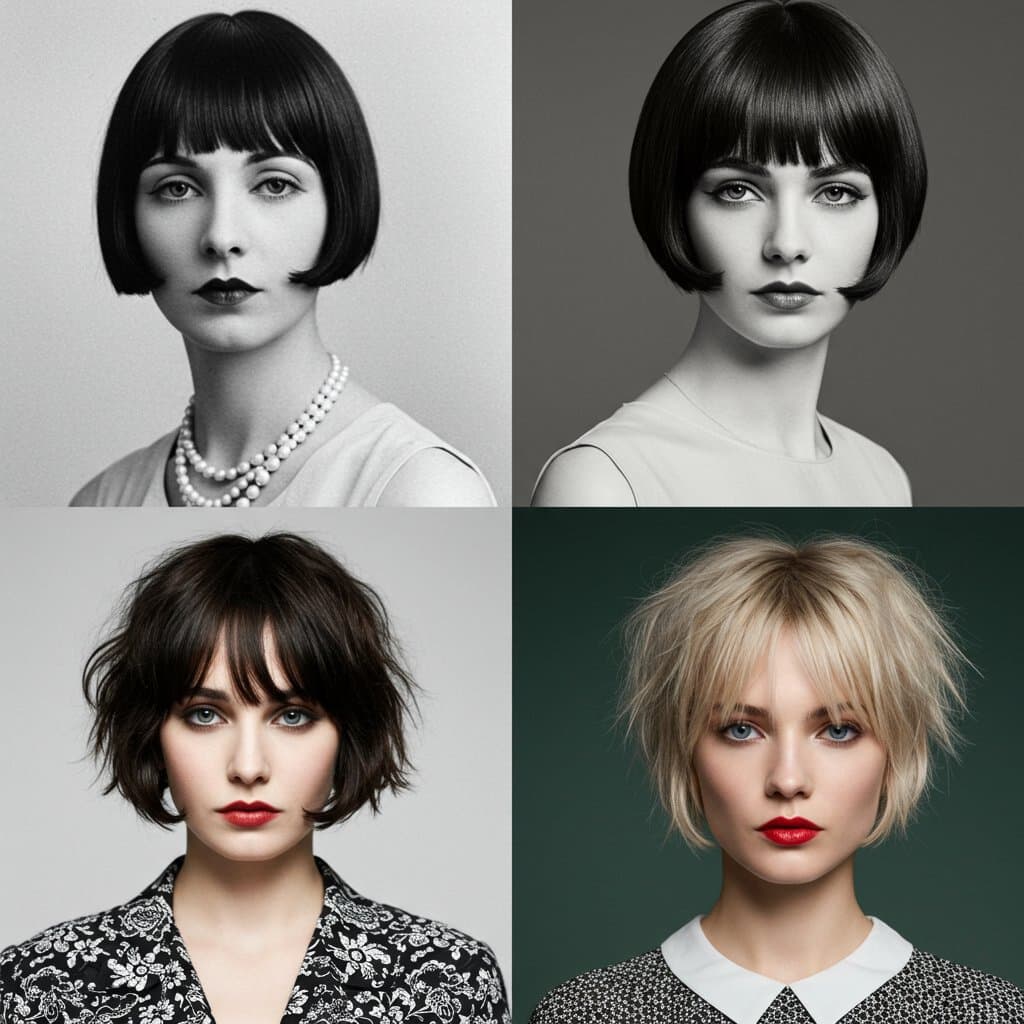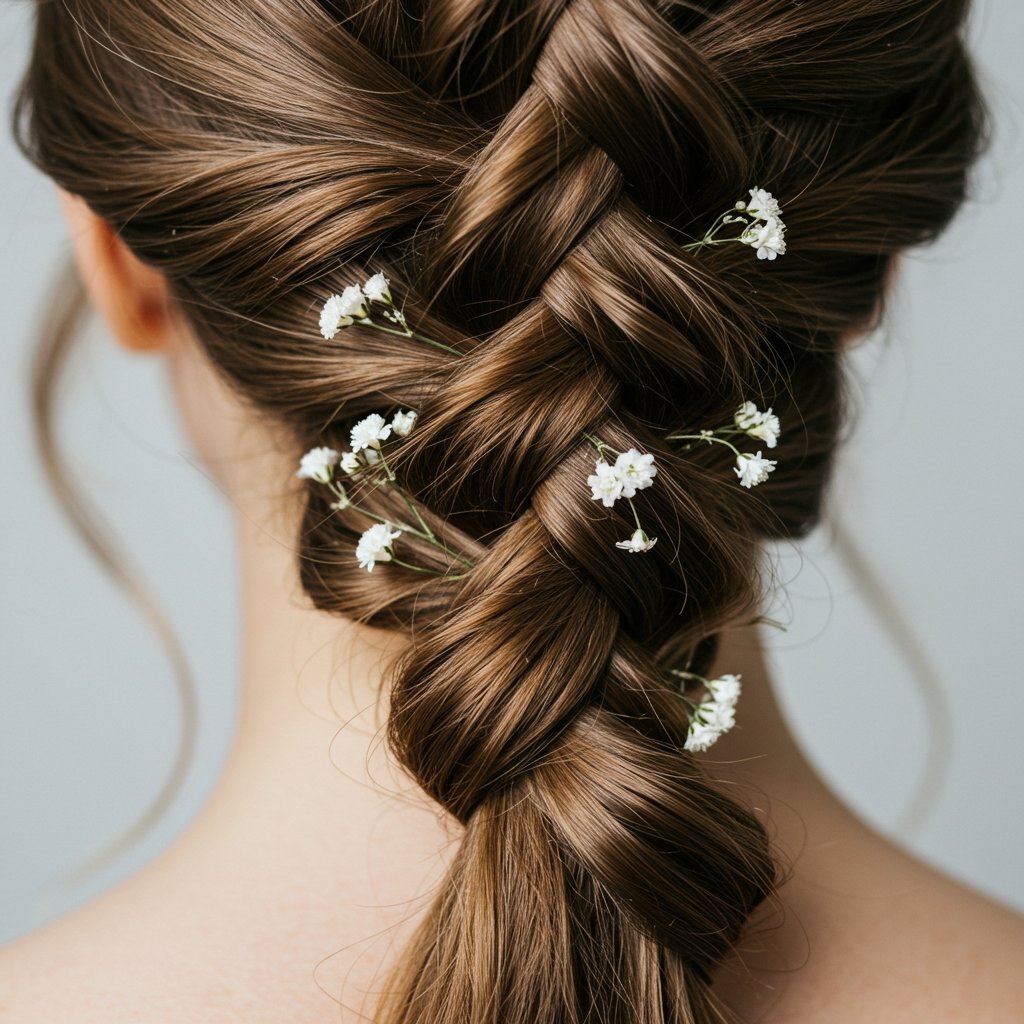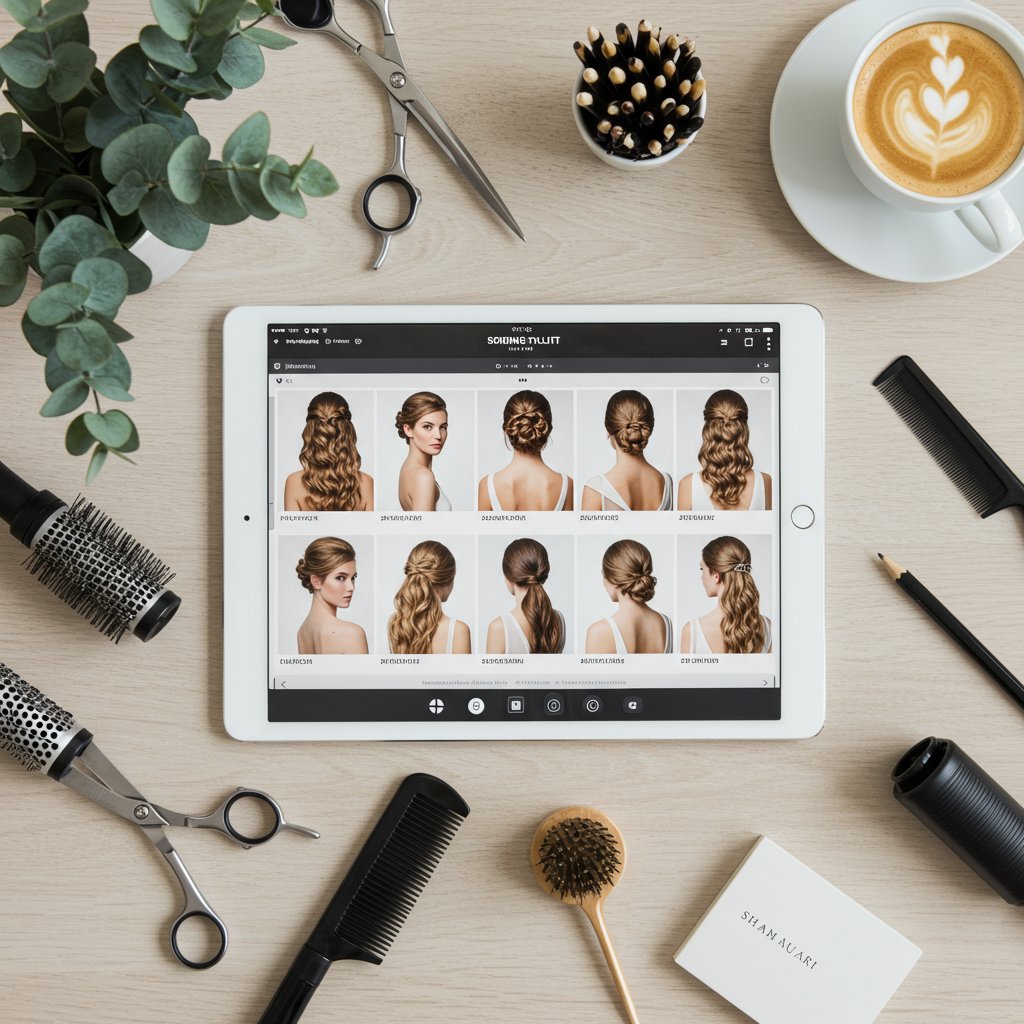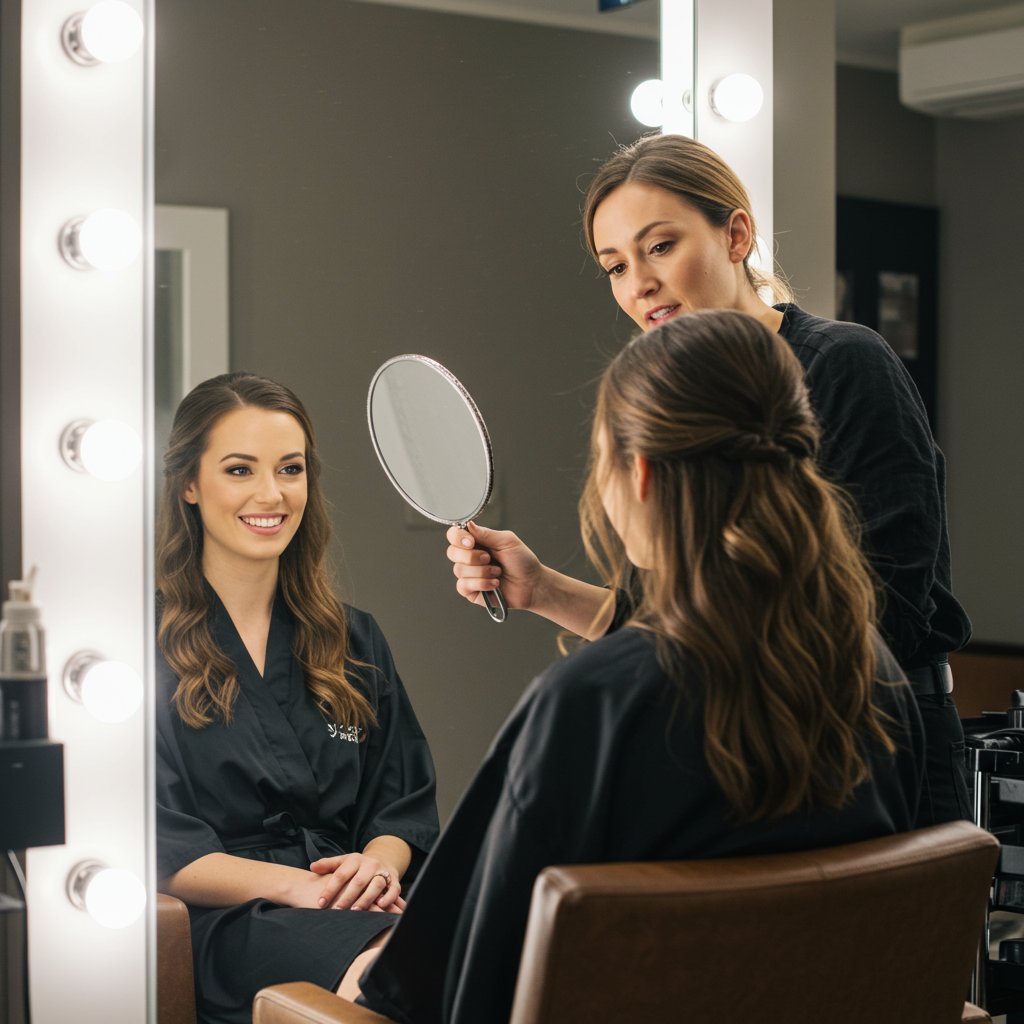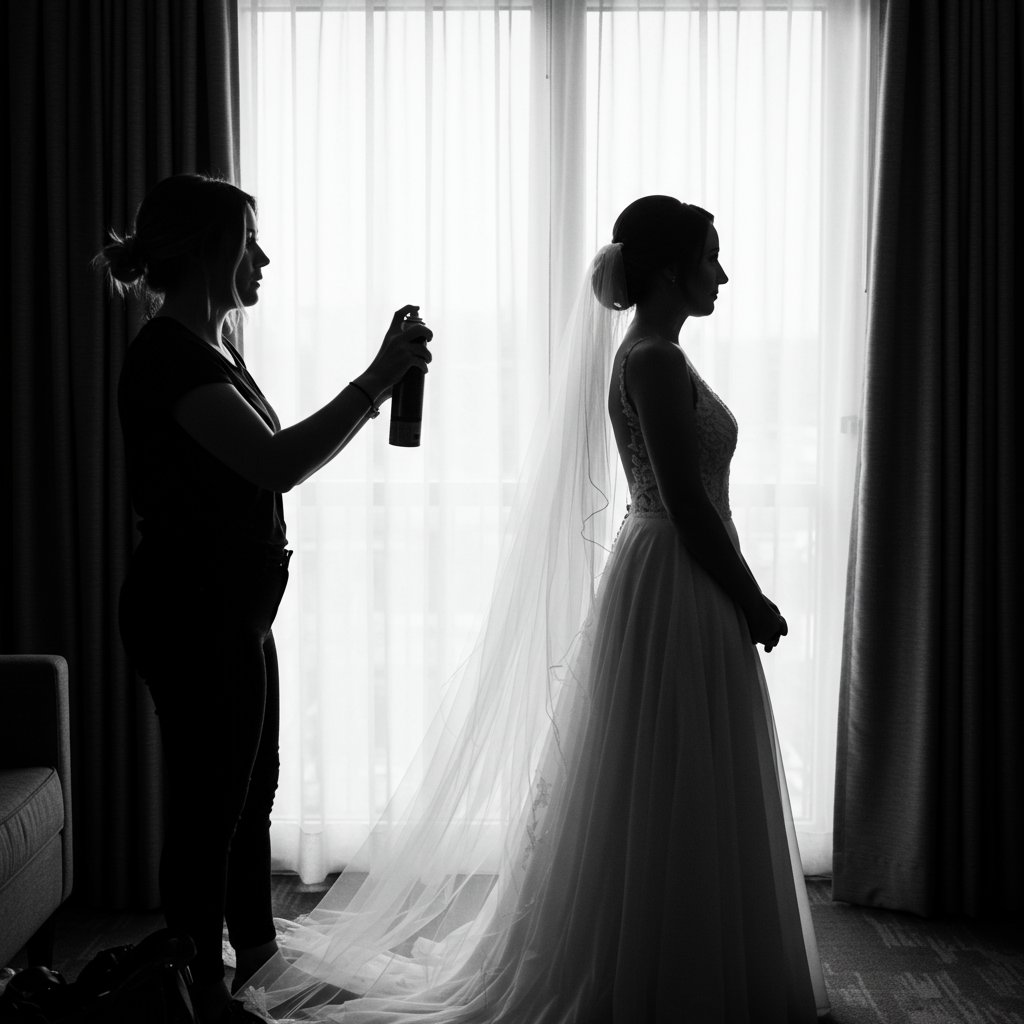The Allure of the Aisle: Why Specialize in Bridal Hair?
The wedding industry is a vibrant, emotionally charged, and incredibly rewarding space for creative professionals. For hairstylists, specializing in bridal hair offers a unique opportunity to blend artistry with entrepreneurship. The business of bridal hair is more than just creating beautiful updos; it's about being an integral part of one of the most memorable days in a person's life. This specialization allows for higher earning potential, creative freedom, and the ability to build a business on your own terms, often outside the traditional salon structure.
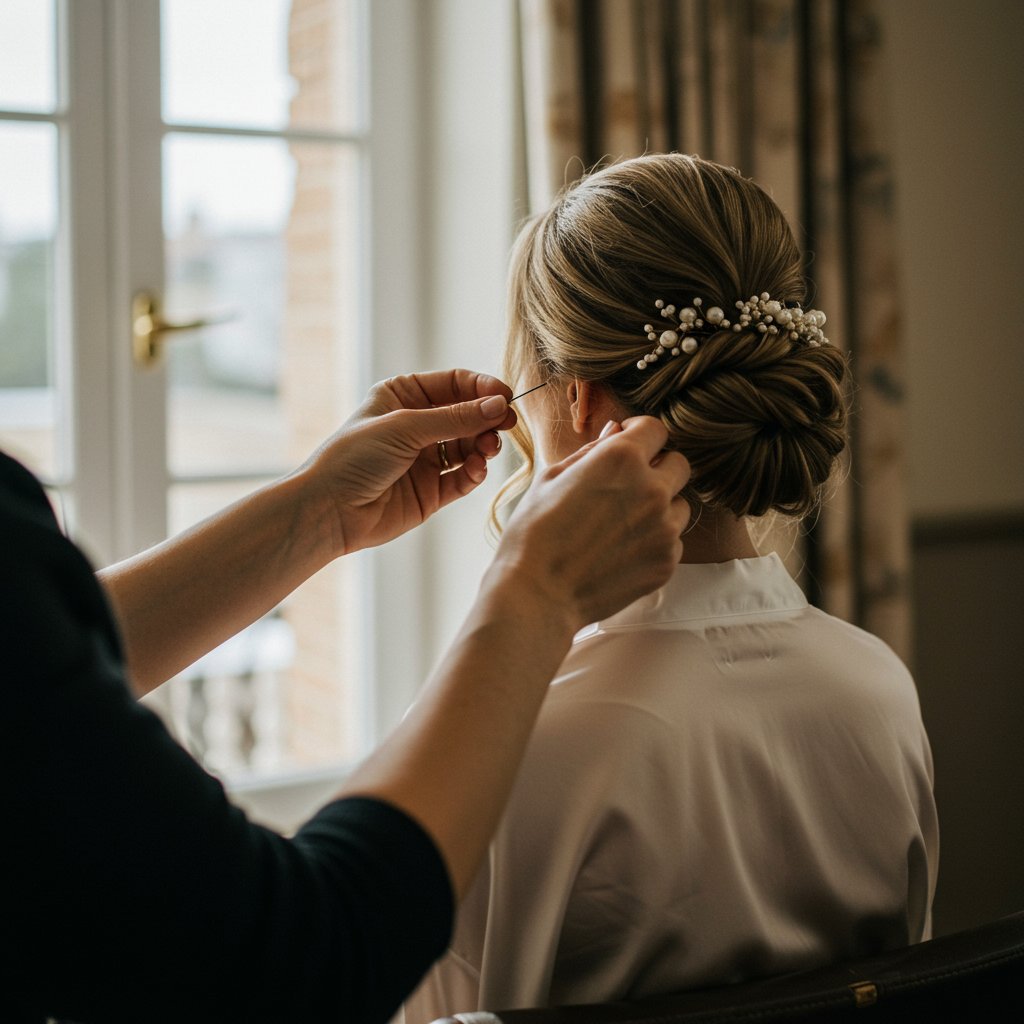
However, transitioning from a general stylist to a sought-after bridal expert requires more than just technical skill. It demands a deep understanding of business principles, marketing, client relations, and the unique pressures of a wedding day. This guide is designed to be your roadmap, providing actionable tips and expert insights for aspiring wedding stylists looking to build a thriving career. We will explore everything from honing your craft and building a portfolio to navigating contracts and marketing your services to attract your ideal clientele. If you're ready to turn your passion for hairstyling into a successful bridal business, this is where your journey begins.
Mastering the Craft: Technical Skills for Bridal Excellence
While salon skills are a fantastic foundation, bridal hair is a specialized discipline that demands a higher level of precision, creativity, and durability. A style that looks great for a few hours is one thing; a style that must withstand photos, wind, dancing, and tears from morning until midnight is another challenge entirely. Aspiring bridal stylists must commit to continuous education and practice to master the techniques that define wedding-worthy hair.
The Art of Longevity
Building a style that lasts is the cornerstone of bridal hairstyling. This involves a strategic approach to product layering, foundation setting, and pin placement. Learn to create a solid base using techniques like backcombing, texturizing sprays, and thermal setting. Understand the science of hair products—when to use a mousse for volume, a pomade for definition, or a strong-hold hairspray for security without stiffness. The goal is to create a style that feels secure and comfortable for the bride while looking effortlessly beautiful.
Versatility and Vision
Modern brides have diverse tastes, from classic chignons and romantic boho waves to sleek, contemporary ponytails. A successful bridal stylist must be versatile. Practice a wide range of styles on different hair types, lengths, and textures. More importantly, learn how to deconstruct inspiration photos and adapt them to your client's specific hair and features. This involves understanding face shapes, hair density, and how to seamlessly incorporate extensions, veils, and intricate hair accessories. Your ability to translate a bride's vision into a tangible, beautiful reality is what will set you apart.
Building a Breathtaking Bridal Portfolio
Your portfolio is your most powerful marketing tool. It's a visual resume that showcases your skill, style, and the type of client you want to attract. A generic collection of salon photos won't suffice; a bridal portfolio must be curated, professional, and speak directly to potential brides. It should evoke emotion and tell a story, allowing clients to envision themselves in your chair on their wedding day.
The Power of Styled Shoots
When you're starting, you may not have a long list of real brides to feature. This is where styled shoots become invaluable. Collaborate with other wedding vendors like photographers, makeup artists, florists, and bridal boutiques to create a mock wedding editorial. This not only allows you to create high-quality, professional images for your portfolio in a controlled environment but also serves as a crucial networking opportunity. When reaching out to potential collaborators, have a clear vision or mood board to demonstrate your professionalism and creative direction.
Showcasing Diversity and Range
Ensure your portfolio represents a wide range of styles, hair types, and ethnicities. A diverse portfolio demonstrates your versatility and makes your work relatable to a broader audience. Feature different types of weddings—from rustic outdoor ceremonies to glamorous ballroom events. Include close-up shots that highlight intricate details, as well as wider shots that show how the hair complements the bride's overall look, including her dress and makeup. Remember to always get permission from both the client and the photographer before sharing any images from a real wedding.
The Nuts and Bolts: Business and Legal Essentials
A successful career in the business of bridal hair is built on a strong business foundation. Ignoring the administrative side can lead to miscommunication, financial loss, and legal issues. Establishing clear policies, professional contracts, and a solid pricing structure from the outset will protect you and your clients, ensuring a smooth and professional experience for everyone involved.
Contracts Are Non-Negotiable
A detailed, legally sound contract is your best friend. It manages expectations and provides a clear record of agreed-upon services. Your contract should include: the client's and your contact information, the wedding date and location, a detailed list of all services to be provided (e.g., bride's hair, number of bridesmaids), a clear timeline for the wedding day, total cost and payment schedule (deposit, final balance), and cancellation/rescheduling policies. Having a bride sign a contract elevates your professionalism and protects you from last-minute changes or cancellations.
Pricing for Profitability
Determining your pricing is one of the most challenging aspects for new stylists. Your rates should reflect your skill level, experience, the local market, and the costs of doing business (e.g., kit supplies, insurance, travel, marketing). Research competitors in your area, but don't simply copy their prices. Calculate your costs and determine what you need to earn to be profitable. Consider offering packages (e.g., bride + bridesmaids) and be clear about à la carte pricing for services like trials, travel fees, and early start times. Confidence in your pricing demonstrates your value.
Insurance and Licensing
Operating as a professional means protecting yourself. General liability insurance is essential for any freelance stylist, especially when working on-location at venues. This insurance protects you in case of accidents or damage. Ensure you are compliant with all local and state cosmetology licensing requirements for providing on-location services. Treating your passion as a legitimate business from day one is crucial for long-term success.
Marketing Your Bridal Hair Business Like a Pro
Creating beautiful hair is only half the battle; attracting clients is the other. Effective marketing is about making your business visible to the right people at the right time. In the digital age, a multi-faceted online presence is key to connecting with engaged couples and the wedding planners who serve them.
Your Digital Storefront: Website and Instagram
Your website is your professional hub. It should feature your portfolio, a detailed services page with pricing information, testimonials from past clients, and an easy way for potential clients to contact you. Instagram and Pinterest are highly visual platforms and are essential for bridal marketing. Use high-quality images and videos, relevant hashtags (e.g., #BridalHair, #[YourCity]WeddingStylist), and engage with your followers. Share behind-the-scenes content, tips for brides, and showcase your personality to build a community around your brand.
The Power of Networking
Building relationships within the local wedding industry is a powerful, long-term marketing strategy. Connect with wedding planners, photographers, makeup artists, and venues. These vendors often work with dozens of couples a year and can become a valuable source of referrals. Attend industry events, collaborate on styled shoots, and always provide an exceptional, professional experience when working alongside other vendors. A glowing recommendation from a respected wedding planner is often more valuable than any paid advertisement.
The Bridal Trial: A Blueprint for Success
The bridal trial is far more than a simple practice run; it's a critical consultation, a rapport-building session, and your primary sales opportunity. This is where you solidify the bride's confidence in your abilities and finalize the wedding day plan. A well-executed trial ensures a seamless, stress-free wedding morning and is key to converting an inquiry into a confirmed booking.
Consultation and Collaboration
Begin the trial with an in-depth consultation. Ask the bride about her wedding dress, venue, overall theme, and personal style. Encourage her to share inspiration photos, but also be prepared to offer your professional opinion on what will work best for her hair type, face shape, and the logistics of the day. This is a collaborative process. Take detailed notes and photos from every angle of the finalized style. This documentation is crucial for perfectly recreating the look on the wedding day.
Setting Expectations
Use the trial to manage expectations about timing, what's achievable with her natural hair, and the potential need for extensions. Be transparent about the process and ensure the bride leaves feeling heard, understood, and excited. Discuss the wedding day timeline in detail, confirming the number of services, the location for getting ready, and the required completion time. This level of organization demonstrates your professionalism and helps calm any pre-wedding nerves.
On-Location Excellence: The Wedding Day Workflow
The wedding day is the culmination of all your hard work. Your role extends beyond being a hairstylist; you are a calming presence, a timekeeper, and a problem-solver. Arriving prepared, organized, and professional is paramount to ensuring the morning runs smoothly and your bride feels her absolute best.
The Professional Kit and Timeline
Your on-location kit should be meticulously organized and contain everything you could possibly need—and then some. Include back-ups of your essential tools (curling irons, blow dryer), a full range of products, and a “problem-solver” kit with items like stain remover, static guard, and a small sewing kit. Weeks before the wedding, create and distribute a detailed hair timeline to the bride and her wedding planner. The timeline should list each person receiving services, their start time, and an end time, with a buffer built in for touch-ups.
Creating a Calm Environment
Your demeanor sets the tone for the getting-ready suite. Be a source of calm, positive energy. Arrive early, set up your station efficiently, and work confidently through your timeline. Communicate clearly and kindly with the wedding party, photographers, and makeup artists. Your ability to remain poised and professional under pressure will not go unnoticed and is often what leads to glowing reviews and vendor referrals. At the end of your services, do final touch-ups, show the bridesmaids how to remove the bride's veil without disturbing the hair, and leave your station cleaner than you found it.
Quick Tips for Aspiring Bridal Stylists
- Invest in Education: Never stop learning. Take advanced classes in bridal updos, business management, and client communication.
- Shadow an Expert: Offer to assist an established wedding hairstylist. The on-the-job experience is invaluable.
- Perfect Your Photography: Learn basic photography and editing skills to capture your work for social media when a professional photographer isn't present.
- Communicate Proactively: From the initial inquiry to the final thank you, clear and prompt communication is key to a premium client experience.
- Request Reviews: After the wedding, send a follow-up email thanking your client and gently requesting a review on platforms like The Knot, WeddingWire, or Google.
- Stay Organized: Use a client management system (like HoneyBook or Dubsado) to keep track of inquiries, contracts, and payments.
Frequently Asked Questions about the Bridal Hair Business
How much should I charge when I'm just starting out?
Your initial pricing should cover all your costs (kit, insurance, travel) and pay you a fair hourly wage. Research the rates of stylists with a similar skill level in your market. It's better to start with a slightly lower, accessible price to build your portfolio and then gradually increase your rates as your experience and demand grow. Avoid undercutting the market significantly, as it devalues your work and the profession.
What are the most essential items for a professional bridal kit?
A professional kit must be comprehensive. Key items include a high-quality marcel curling iron and a 1.25-inch curling iron, a blow dryer with attachments, a variety of brushes and combs, professional-grade hairsprays (light, medium, strong hold), texturizing spray, shine spray, pomade, bobby pins and hair pins in multiple colors, and clear elastics. Also include hair extensions for practice and client trials.
How do I get my first clients?
Start by leveraging your existing network. Let friends and family know you are specializing in bridal hair. Use social media to showcase your work from styled shoots. Network with new photographers and makeup artists who are also building their portfolios. Consider offering a portfolio-building discount for your first few real brides in exchange for detailed reviews and permission to use their professional photos.
Do I really need liability insurance?
Absolutely. Liability insurance is non-negotiable for any professional working on-location. It protects you financially from claims of injury or property damage. Many high-end wedding venues will not allow vendors to work on-site unless they can provide a certificate of insurance.
How do I handle a difficult or indecisive bride?
Patience and clear communication are key. During the trial, listen carefully to her concerns and guide her toward a decision. Use your professional expertise to explain why one style might be a better choice than another for her hair type or wedding day conditions. Take extensive notes and photos once a decision is made to avoid confusion later. On the wedding day, maintain a calm and reassuring presence.
Conclusion: Building Your Dream Bridal Business
Embarking on a career in the business of bridal hair is a journey that combines artistic passion with sharp business acumen. Success isn't just about creating the perfect hairstyle; it's about building a brand, delivering an impeccable client experience, and establishing yourself as a trusted professional within the wedding community. By mastering your craft, creating a stunning portfolio, managing your business legally and efficiently, and marketing yourself with confidence, you can build a fulfilling and profitable career.
Remember that every renowned bridal stylist started with their first wedding. Be patient with your growth, celebrate your successes, and continuously seek opportunities to learn and refine your skills. The dedication you invest today will be the foundation for the sought-after bridal brand you build tomorrow. Now, go create something beautiful.




